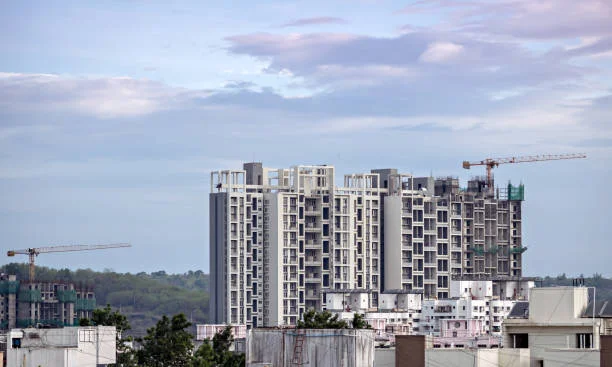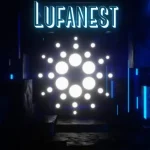In recent years, Fort Worth has transformed from a quietly growing city into one of Texas’s most talked-about housing market. Its evolution has been steady but dramatic, reshaping not just where people live, but how the city itself looks and functions. From the historic districts that reflect Fort Worth’s roots to the sleek new builds stretching toward the suburbs, housing trends are influencing everything from traffic flow to neighborhood identity.
This isn’t just about rising prices or bidding wars—it’s about the ripple effect that a strong housing market has on an entire urban landscape. And in Fort Worth, that ripple is starting to look more like a wave.
The Push Toward Infill and Density
As home values climb and land becomes scarcer, Fort Worth has seen a growing interest in infill development—projects that transform vacant or underused lots within established neighborhoods. These builds aren’t sprawling estates or massive apartment complexes. Instead, they’re compact homes, townhouses, and duplexes that quietly increase density while preserving neighborhood character.
Infill development has reshaped neighborhoods like Fairmount and the Near Southside, turning once-forgotten corners into walkable, mixed-use hubs. New construction blends with historic bungalows, and small businesses are sprouting up in spaces that had sat idle for decades. This is the housing market working as a catalyst—not just for profit, but for neighborhood revitalization.
It also reflects a broader shift in buyer behavior. More people, especially younger professionals and downsizing retirees, are prioritizing walkability, shorter commutes, and community-oriented living. That demand drives development back into the urban core, rather than pushing it endlessly outward.
Don’t stop here—take a look at what else we’ve got for you!
Gentrification, Preservation, and the Balancing Act
As Fort Worth grows, so do tensions between development and preservation. Longtime residents are watching their neighborhoods change rapidly—sometimes with excitement, and sometimes with concern. Gentrification can bring investment, improved infrastructure, and increased safety. But it can also displace residents and dilute the cultural fabric that made these areas desirable in the first place.
City leaders, community organizations, and developers are increasingly aware of this balance. Efforts are underway to protect historic homes, offer mixed-income housing, and include community voices in planning discussions. But progress is uneven, and the challenge remains: how to accommodate growth without erasing identity.
Much of this conversation is happening in real time, as new projects emerge and older homes are sold, renovated, or demolished. Buyers and investors play a key role in what kind of Fort Worth is being built—not just in terms of aesthetics, but in terms of accessibility and inclusion.
That’s why some sellers and homeowners are choosing to work with local buyers who have roots in the area and understand its evolving dynamics. Four 19 Properties is one such buyer, working directly with homeowners in Fort Worth to purchase houses for cash. This offers an alternative to traditional sales and allows sellers to move quickly without the red tape of repairs or financing delays. By offering flexible solutions, local cash buyers can help support smoother transitions during periods of neighborhood change, ensuring residents aren’t forced out by the pace of development.
Suburban Spillover and the Shifting Edges of the City
While urban infill is gaining steam, the outer edges of Fort Worth are still experiencing significant suburban expansion. Master-planned communities are spreading into what were once rural stretches, bringing with them new schools, shopping centers, and highways.
This growth helps absorb some of the housing demand, but it also changes the face of Fort Worth. Commute patterns shift. Public transportation systems are pushed to expand. Infrastructure must keep up with the rapid pace of development.
What’s interesting is how these suburban areas are increasingly borrowing design principles from the urban core. Developers are building with community in mind—incorporating parks, shared spaces, and walkable streets that mimic city life, even in the suburbs. The line between urban and suburban is starting to blur, reshaping Fort Worth’s footprint and how residents interact with the city as a whole.
Investors, Renovators, and the Rise of the Fix-and-Flip
Another major force shaping Fort Worth’s urban landscape is the wave of investors revitalizing older homes. Fix-and-flip projects are everywhere—particularly in areas close to downtown where aging housing stock still stands strong structurally but needs cosmetic or functional upgrades.
These efforts are doing more than increasing resale value. They’re preserving the bones of the city while updating them for modern living. Original hardwood floors are being refinished instead of replaced. Porches are being restored. Classic Fort Worth charm is blending with contemporary layouts.
This reinvestment helps neighborhoods stay alive rather than being left behind. It also attracts buyers who might otherwise be priced out of newer developments. While not all investors take a community-first approach, those who do are making a noticeable impact—not just on property values, but on the streetscape and feel of the neighborhoods they touch.
Fort Worth’s Future is Being Built Now
The housing market in Fort Worth isn’t just responding to growth—it’s directing it. Whether it’s through rising demand, shifting demographics, or new types of housing, the market is guiding how and where the city expands. And with that growth comes responsibility: to protect the character of Fort Worth, to ensure that prosperity is shared, and to build with long-term livability in mind.
City planners, developers, real estate professionals, and residents all have a stake in this process. The decisions made today—about zoning, investment, affordability, and preservation—will define what kind of city Fort Worth becomes in the decades ahead.
The blueprint isn’t set in stone. But one thing is clear: housing will continue to be one of the most powerful tools shaping Fort Worth’s urban identity.
Want more insights like this? Head over to 2A Magazine and start exploring.







